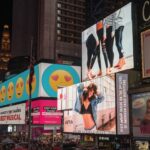Instagram Stories have rapidly evolved from a fleeting content format into a cornerstone of modern digital advertising, offering brands an unparalleled opportunity to connect with audiences through immersive, full-screen experiences. Leveraging this dynamic placement for ad optimization demands a nuanced understanding of its unique characteristics, audience consumption habits, and the sophisticated targeting and measurement capabilities available. The core value proposition of Instagram Stories for advertisers stems from their ephemeral nature, fostering a sense of urgency and immediacy, coupled with their integration into users’ daily routines, making ad consumption feel more native and less intrusive.
The Foundational Pillars of Instagram Stories Ad Strategy
Optimizing ad performance on Instagram Stories begins with a robust strategic framework. This encompasses precise goal setting, meticulous audience segmentation, intelligent budget allocation, and the development of compelling creative briefs tailored specifically for the Stories environment. Without these foundational pillars, even the most innovative creative or advanced targeting techniques will struggle to yield optimal results.
Goal-Centric Campaign Design: Every Instagram Story ad campaign must be anchored by clear, measurable objectives. Are you aiming for increased brand awareness, driving traffic to a specific landing page, generating qualified leads, boosting product sales, or encouraging app installs? Each objective dictates different optimization strategies, targeting parameters, and creative approaches. For brand awareness, metrics like reach, impressions, and video views (especially ThruPlay) become paramount. For conversions, focus shifts to click-through rates (CTR), cost per conversion (CPC), conversion rate (CVR), and return on ad spend (ROAS). Defining these KPIs upfront allows for a focused approach to ad optimization, ensuring resources are directed towards achieving tangible business outcomes rather than merely accumulating vanity metrics. Objectives like “Reach” optimize for showing your ad to the maximum number of unique users, while “Conversions” will instruct the algorithm to find users most likely to complete a desired action on your website or app. Understanding these distinctions is crucial for setting up campaigns effectively within the Facebook Ads Manager, which governs Instagram advertising.
Precision Audience Segmentation: The efficacy of Instagram Story ads is profoundly influenced by the precision of audience targeting. Instead of broad strokes, successful advertisers delve into granular audience segmentation. This involves creating detailed buyer personas that encompass demographics (age, gender, location, language), psychographics (interests, values, lifestyle), and behavioral patterns (online purchasing habits, device usage, engagement with specific content types). Advanced targeting capabilities within the Facebook Ads Manager allow for:
- Interest-Based Targeting: Pinpointing users who have expressed interest in topics relevant to your brand, products, or services. This can be highly specific, combining multiple interests to narrow down the audience. For example, instead of just “fitness,” target “yoga,” “meditation,” and “healthy eating” for a wellness brand.
- Behavioral Targeting: Reaching users based on their online activities, such as digital purchasing behavior, travel patterns, or even specific device usage. This provides deeper insights into their consumer journey.
- Custom Audiences: Leveraging your existing data for highly relevant targeting. This includes website visitors (via the Facebook Pixel), app users, customer lists (CRM data), and engagement audiences (people who have interacted with your Facebook or Instagram profiles, videos, or lead forms).
- Lookalike Audiences: Creating new audiences that share characteristics with your best existing customers or high-value website visitors. If you have a strong custom audience of purchasers, creating a 1% lookalike audience can significantly expand your reach with high-propensity buyers. This is a powerful scaling tool.
- Retargeting Funnels: Implementing sequential ad campaigns based on user interaction (e.g., show an ad for a specific product to users who viewed that product page but didn’t purchase). Story ads are excellent for retargeting due to their immersive nature, allowing for tailored messages that address specific stages of the sales funnel, from awareness to conversion. Effective retargeting often involves segmenting users by their level of engagement or stage in the purchase journey (e.g., viewed product, added to cart, initiated checkout).
Intelligent Budget Allocation and Bidding Strategies: Optimizing ad spend is critical for maximizing ROAS. Instagram Story ads offer various bidding strategies, including lowest cost (automatic bidding), cost cap (setting a maximum CPA or CPC), and bid cap (setting a maximum bid per impression). The choice of strategy depends on your campaign goals and comfort with control versus automation. For new campaigns or broad audiences, lowest cost often works well, allowing the algorithm to find the most efficient delivery. For campaigns with strict CPA targets, cost cap provides more control. It’s also vital to consider the ad frequency – showing the same ad too often to the same audience can lead to “ad fatigue,” diminishing returns and increasing costs. Monitoring frequency metrics within Ads Manager is essential, and diversifying creative assets can combat this issue. A/B testing different budget allocations across various ad sets or campaigns helps identify the most cost-effective approaches.
Crafting the Optimal Creative Brief: The unique vertical, full-screen, and often sound-on nature of Instagram Stories demands a specialized creative brief. Key considerations include:
- Vertical Aspect Ratio (9:16): Non-negotiable for an immersive, native experience. Cropping horizontal video leads to wasted screen real estate and an unprofessional look.
- Speed and Conciseness: Stories are consumed quickly. The ad must capture attention within the first 3 seconds.
- Sound On/Off Design: While many users watch stories with sound, many also watch without. Ads must be compelling both visually and audibly, with captions or on-screen text reinforcing key messages.
- Clear Call to Action (CTA): Prominently displayed and easy to understand (e.g., “Swipe Up to Shop,” “Learn More,” “Get Offer”).
- Brand Integration: Seamlessly weaving your brand identity into the narrative without being overly promotional from the outset.
Creative Best Practices for Optimal Story Ad Performance
The creative elements of an Instagram Story ad are arguably the most influential factor in its success. They determine whether a user stops swiping, engages with the content, and ultimately takes action.
Vertical Video Dominance (9:16 Aspect Ratio): This is paramount. Instagram Stories are designed for vertical consumption, filling the entire screen and minimizing distractions. Ads that adhere to this 9:16 aspect ratio feel native, natural, and immersive, preventing users from seeing black bars or being pulled out of the experience. Using horizontal or square video leads to a fragmented viewing experience, often with crucial elements cut off or shrunk. Invest in producing dedicated vertical video content or use professional editing tools to adapt existing assets thoughtfully. High resolution is also non-negotiable for visual clarity and brand perception.
The Crucial First 3 Seconds: In the fast-paced world of Stories, attention spans are fleeting. The first three seconds of your ad are make-or-break. They must immediately hook the viewer. Strategies include:
- Dynamic Visuals: Rapid cuts, motion graphics, or captivating imagery that instantly grab the eye. Avoid slow, static openings.
- Intriguing Questions or Statements: On-screen text that poses a question or makes a bold claim relevant to the audience’s pain points or desires.
- Unexpected Elements: A touch of humor, a surprising visual, or an immediate reveal of a compelling product benefit.
- Brand Recognition: While not the sole focus, subtle brand elements or a familiar jingle can help immediate recognition for established brands.
The goal is to create curiosity and compel the user to watch the remainder of the ad.
Designing for Sound On and Sound Off: A significant portion of Instagram users view Stories with the sound off, especially in public spaces. Therefore, your ad must be effective in both scenarios.
- Visual Storytelling First: Ensure the core message, product, and CTA are comprehensible without audio. This often means relying heavily on strong visuals, clear text overlays, and intuitive actions.
- Strategic Use of Captions: Hard-coding captions or subtitles into your video ensures your message is conveyed even when sound is muted. This is particularly important for dialogue, voice-overs, or explaining complex features.
- Leveraging Music and Voiceovers: When sound is on, engaging background music or a professional voiceover can significantly enhance the emotional connection and memorability of the ad. Consider trending sounds for a native feel, but ensure they align with your brand voice and message. Test different audio tracks to see what resonates most with your target audience.
Clear and Prominent Calls to Action (CTAs): A powerful ad is useless without a clear directive. The CTA should be unmistakable.
- Visible Swipe Up Prompt: Instagram Story ads prominently feature a “Swipe Up” or equivalent action button (e.g., “Shop Now,” “Learn More,” “Sign Up”). Ensure this visual prompt is always visible and complementary to your creative.
- Repetition of CTA: Reinforce the CTA verbally (if sound is on), with on-screen text, and through visual cues.
- Contextual CTAs: Tailor the CTA to the ad’s objective. If you’re selling a product, “Shop Now” is ideal. If you’re building an email list, “Sign Up” or “Get Offer” is more appropriate.
- Interactive Elements (Inspiration from Organic): While direct interactive stickers like polls or quizzes aren’t available for all ad types, the spirit of engagement can be incorporated into ad creative. For example, a video ad could pose a question and suggest “Swipe up to find out,” mimicking the curiosity generated by organic story features. This allows advertisers to leverage the inherent interactivity users expect from Stories.
Authenticity and Relatability: Instagram is a platform built on authenticity. Overly polished, corporate-feeling ads often underperform compared to content that feels genuine and relatable.
- User-Generated Content (UGC): Showcase real customers using or reviewing your product. UGC builds trust and provides social proof, often outperforming professional studio content because it feels more authentic and less like a direct advertisement. Seek permission before using UGC.
- Influencer Collaborations: Partner with influencers whose audience aligns with your target market. Their authentic endorsement can drive significant engagement and conversions, as their followers trust their recommendations. Ensure disclosures are clear.
- Behind-the-Scenes Glimpses: Offer a sneak peek into your brand’s operations, product creation, or company culture. This humanizes your brand and fosters a deeper connection.
- Raw and Unfiltered Style: Sometimes, less polished, more spontaneous video can outperform highly produced content because it feels more “native” to the Stories environment. This isn’t an excuse for low quality, but rather an embrace of a less commercial aesthetic.
Seamless Brand Integration: While authenticity is key, your brand must still be recognizable.
- Subtle vs. Prominent: The level of brand integration depends on your objective. For awareness, more prominent branding might be suitable. For direct response, focus more on the product/benefit, with branding being clear but not overwhelming.
- Consistent Visual Identity: Ensure your brand colors, fonts, and logo are consistently applied across all ad creatives to build recognition and reinforce brand identity.
- Brand Storytelling: Weave your brand’s narrative, values, or unique selling proposition into the brief, engaging story ad.
Dynamic Creative Optimization (DCO): Leverage Facebook’s DCO feature to automatically test combinations of your creative assets (images, videos, text, CTAs) to determine the highest-performing variations. This can significantly accelerate the optimization process by allowing the algorithm to identify winning combinations at scale, reducing manual A/B testing efforts for individual elements. Provide a variety of assets and let the system find the optimal mix for different audience segments.
Text Overlays and Visual Hierarchy: Text overlays are crucial for conveying messages quickly, especially when sound is off.
- Legibility: Use clear, readable fonts with sufficient contrast against the background. Avoid overly ornate fonts or colors that blend in.
- Conciseness: Keep text overlays brief and to the point. Focus on keywords, benefits, or the core message.
- Strategic Placement: Ensure text doesn’t obscure key visuals or conflict with the CTA button or profile name. Leave sufficient “safe zones” for UI elements.
- Hierarchy: Use different font sizes, weights, or colors to create a visual hierarchy, guiding the viewer’s eye to the most important information first.
Targeting Advanced Strategies for Story Ad Optimization
Beyond the fundamental audience segmentation, advanced targeting techniques can dramatically enhance the relevance and performance of Instagram Story ads.
Hyper-Precise Demographic Targeting: While basic demographics are a starting point, drilling down into specific age ranges, gender preferences, and geographic locations (down to zip codes or radius targeting) can ensure your message reaches the most relevant segments. For example, a local restaurant might target users within a 5-mile radius, while a fashion brand might target specific age groups known to favor their styles.
Granular Interest-Based Targeting: The power lies in combining interests and leveraging the “AND” function (implicitly or explicitly via detailed targeting expansion options) within Ads Manager to narrow your audience. Instead of targeting “sports,” target “soccer” AND “running shoes” AND “fitness apps” for a sportswear brand. Experiment with niche interests that might indicate a stronger purchase intent.
Behavioral Insights for Deeper Connection: Utilize behavioral targeting to understand user actions beyond stated interests. This includes purchase behaviors (e.g., “online shoppers,” “engaged shoppers”), digital activities (e.g., “early tech adopters”), or even specific device usage (e.g., “mobile device users who prefer iOS”). This allows you to infer intent and tailor messaging accordingly. For instance, if you sell high-end tech, targeting users who exhibit luxury purchase behavior and use premium mobile devices would be more efficient.
Leveraging Custom Audiences for High Relevance: This is where the true power of retargeting and personalized marketing shines.
- Website Custom Audiences (via Facebook Pixel): Crucial for retargeting users who have visited specific pages on your website, added items to their cart, or completed a purchase. You can segment these audiences by frequency of visits, time spent on site, or specific actions taken. Tailor story ads with dynamic product ads for users who viewed specific products.
- App Activity Custom Audiences (via SDK): If you have an app, target users based on in-app events like installs, specific feature usage, or in-app purchases. This is invaluable for driving re-engagement or upselling.
- Customer List Custom Audiences: Upload your CRM data (email addresses, phone numbers) to Facebook to create highly targeted audiences. This allows you to re-engage existing customers, upsell, cross-sell, or exclude them from certain campaigns.
- Engagement Custom Audiences: Target people who have interacted with your Facebook Page, Instagram profile, watched your videos (e.g., viewed 75% or 95% of a previous video ad), or opened your lead forms. These users have already shown some level of interest, making them more receptive to your ads.
Scaling with Lookalike Audiences: Once you have a high-performing custom audience (e.g., your top 10% of customers by lifetime value, or all purchasers), create lookalike audiences. Start with a 1% lookalike (most similar), and then test 2-5% or even 5-10% for broader reach. Lookalikes are powerful for finding new prospects who share characteristics with your most valuable existing audience, allowing for efficient scaling of successful campaigns.
Sophisticated Retargeting Funnels: Design multi-stage retargeting campaigns using Instagram Stories.
- Stage 1 (Awareness/Consideration): Show engaging, benefit-driven story ads to website visitors.
- Stage 2 (Intent): For users who viewed a product or added to cart, show specific product ads (e.g., Dynamic Product Ads) with a stronger conversion focus, perhaps highlighting limited stock or a special offer.
- Stage 3 (Decision): For users who initiated checkout but didn’t complete, show ads addressing common objections (e.g., free shipping, easy returns, customer testimonials).
This sequential messaging builds familiarity and nudges users down the conversion funnel.
Placement Optimization: Focusing on Stories: While automatic placements can be convenient, for maximum optimization of Instagram Stories, it’s often beneficial to specifically select “Instagram Stories” as the only placement. This allows you to tailor your creative and messaging precisely for this format without compromising on other placements. It also gives you clearer data on how your Story ads are performing in isolation. While automatic placements can sometimes find unexpected efficiencies, dedicated Story ad campaigns ensure every creative decision is made with the Story environment in mind.
Ad Formats and Features Specific to Instagram Stories
Instagram Stories support various ad formats, each offering unique advantages for different campaign objectives. Understanding and utilizing these formats effectively is crucial for optimal performance.
Single Image/Video Ads: These are the most common and foundational ad types.
- Single Image Ads: A static image filling the 9:16 screen. Effective for striking visuals, clear product shots, or text-heavy announcements (though text should be minimal and legible). Best for quick brand messages or driving immediate clicks with a strong visual.
- Single Video Ads: A short video (up to 15 seconds recommended for organic, but ads can be up to 120 seconds, though shorter is often better for Stories). This format allows for dynamic storytelling, product demonstrations, or testimonials. The engaging nature of video naturally lends itself to the Story format. Optimize video length for maximum retention within the Story environment. While longer videos are possible, users are accustomed to short, snappy content in Stories, so aim for impact in the shortest possible time.
Carousel Ads in Stories: This format allows advertisers to showcase up to three images or videos within a single story ad, each with its own clickable link.
- Storytelling Potential: Use carousels to tell a sequential story, demonstrating different product features, variations, or steps in a process.
- Product Showcase: Ideal for e-commerce, allowing users to swipe through multiple products or different angles of the same product within one ad unit.
- Increased Engagement: The act of swiping through multiple cards can increase user interaction and time spent with the ad. Each card can have a unique CTA.
Collection Ads (Mobile-First Shopping Experience): Collection ads are a highly visual, full-screen format designed for product discovery and shopping. When a user taps on a collection ad, they are taken to an immersive, instant-experience storefront within Instagram, where they can browse multiple products from a product catalog.
- Seamless Shopping: Provides a frictionless path from discovery to purchase without leaving the Instagram app immediately.
- Dynamic Product Feed Integration: Connects directly to your product catalog, making it easy to display relevant products dynamically.
- Immersive Experience: The full-screen layout and instant loading create a compelling shopping environment. Excellent for driving direct e-commerce sales.
Leveraging “Organic” Features for Ad Inspiration: While certain interactive stickers (like polls, quizzes, question stickers) are primarily organic Story features and not directly available for ads, understanding their effectiveness provides crucial insights for ad creative.
- Mimicking Interactivity: Your video ad can pose a question (e.g., “Which style is your favorite?”) and then direct users to “Swipe up to vote” on your landing page or see options. This simulates the interactive nature users expect.
- User-Generated Content (UGC) Integration: Encourage users to submit content using your branded hashtag, then curate and repurpose the best UGC into your ad creatives. This amplifies authenticity and builds community.
- AR Filters/Branded Effects: While creating a standalone AR filter might be a broader brand awareness play, advertising through or with a popular AR filter can drive significant engagement and virality. If a user tries your branded filter organically, their friends see it, and you can potentially retarget those who engaged with the filter.
Shopping Tags in Stories (Organic and Ad-Linked Potential): For organic stories, businesses can tag products directly in their stories, allowing users to tap and view product details or make a purchase. While not a direct ad format, the concept can be applied: drive traffic to a landing page where products are prominently displayed, mirroring the native shopping experience. Dynamic Product Ads in Stories are the closest ad equivalent to this native shopping experience.
Measurement, Analysis, and Iteration for Optimization
The true power of digital advertising lies in its measurability. Optimizing Instagram Story ads requires diligent tracking, insightful analysis, and a commitment to iterative improvement.
Key Performance Indicators (KPIs) for Story Ads: Monitor a comprehensive suite of metrics within Facebook Ads Manager to gauge performance against your campaign objectives.
- Reach and Impressions: How many unique people saw your ad and how many times was it displayed overall? These are foundational for awareness campaigns.
- Engagement Rate: Specifically for Stories, this includes metrics like taps forward/back (indicating interest or re-watching), swipes up (direct action), and replies (direct interaction). High engagement rates suggest your creative is resonating.
- Cost Per Mille (CPM): The cost to reach 1,000 impressions. A high CPM might indicate audience fatigue or intense competition.
- Cost Per Click (CPC): The cost for each click on your ad. A low CPC indicates efficient traffic generation.
- Click-Through Rate (CTR): The percentage of impressions that resulted in a click. A high CTR (especially for ads with a clear CTA) signifies strong ad relevance and appeal.
- Conversion Rate (CVR): The percentage of clicks that resulted in a desired action (e.g., purchase, lead form submission, app install). This is the ultimate metric for direct response campaigns.
- Return on Ad Spend (ROAS): The revenue generated for every dollar spent on advertising. The most critical metric for e-commerce and revenue-driven campaigns.
- Video View Metrics: For video ads, track 3-second views, 10-second views, and ThruPlay (views of at least 15 seconds or the entire video if shorter). These metrics indicate video retention and engagement.
Deep Dive into Facebook Ads Manager: This platform is your command center for Instagram Story ad optimization.
- Customizing Columns: Tailor your report columns to display the KPIs most relevant to your campaign goals. This allows for quick, focused analysis.
- Breakdown Options: Utilize breakdown options (by age, gender, placement, time of day, country) to identify specific audience segments or placements that are over- or under-performing. This pinpoints areas for precise optimization. For example, if a certain age group has a significantly lower CTR, you might consider excluding them or creating specific creative for them.
- Performance Trends: Monitor performance trends over time to identify patterns, seasonality, or the onset of ad fatigue.
Rigorous A/B Testing Methodologies: A/B testing (or split testing) is fundamental to data-driven optimization.
- Isolate Variables: Test only one variable at a time (e.g., two different video creatives, two distinct audience segments, two CTAs) to accurately attribute performance changes.
- Statistical Significance: Ensure your tests run long enough and gather sufficient data to achieve statistical significance. Don’t make decisions based on limited data, which can lead to false conclusions. Facebook’s A/B test feature can guide this.
- Duration of Tests: Allow tests to run for at least 3-7 days to account for daily fluctuations and ensure the algorithm has enough time to learn and optimize delivery.
- Hypothesis-Driven Testing: Formulate a clear hypothesis before testing (e.g., “Creative A will generate a 15% higher CTR than Creative B due to its faster hook”).
Attribution Models Understanding: How are conversions credited across different touchpoints?
- Default Attribution Window: Facebook’s default is 7-day click and 1-day view. Understand what this means for your data. A conversion that occurred within 7 days of a click on your ad, or within 1 day of viewing it, will be attributed to that ad.
- Multi-Touch Attribution: For complex customer journeys, consider how Instagram Story ads fit into a broader marketing funnel. While Ads Manager provides single-touch attribution by default, understanding the customer journey across channels helps value the role of awareness-driving Story ads.
The Iterative Optimization Cycle: Digital marketing is a continuous loop of improvement.
- Test: Launch campaigns with specific hypotheses.
- Analyze: Monitor performance using your chosen KPIs and breakdown options.
- Adjust: Based on insights, make data-driven adjustments (e.g., pause underperforming creatives, increase budget on winning ad sets, refine targeting).
- Repeat: Continuously test new creatives, audiences, and strategies.
Troubleshooting Common Issues:
- Low CTR: May indicate poor creative, irrelevant targeting, or unclear CTA. Revamp visuals, refine messaging, narrow audience.
- High CPC/CPA: Could be due to strong competition, audience fatigue, or inefficient bidding. Expand audience, refresh creative, review bid strategy.
- Low Conversion Rate: Traffic is coming, but not converting. This points to issues on the landing page (slow load times, poor user experience, irrelevant content) or a disconnect between ad promise and landing page reality. Ensure seamless user journey.
- Ad Fatigue: When frequency is too high and performance drops. Rotate creatives frequently, expand your audience, or implement sequencing.
Advanced Optimization Techniques and Future Trends
As Instagram Stories advertising matures, so do the techniques available for advanced optimization. Leveraging these can provide a significant competitive edge.
Sequencing Story Ads for Narrative Flow: Instead of standalone ads, create a series of Instagram Story ads that tell a sequential story over a period.
- Build Suspense: Start with an awareness ad, followed by a problem/solution ad, then a product reveal, and finally a conversion-focused ad.
- Deepen Engagement: This approach allows for more complex narratives, product education, or brand storytelling that builds rapport over time. Use custom audiences to target users who have seen the previous ad in the sequence.
- Product Launches: Ideal for teasing, revealing, and launching new products, building anticipation.
Dynamic Product Ads (DPAs) in Stories: DPAs allow you to automatically show relevant products from your catalog to users who have shown interest in your products (e.g., visited a product page, added to cart). Integrating DPAs into Story placements is incredibly powerful for retargeting.
- Personalization at Scale: Automatically generates ads with products highly relevant to each user’s browsing history.
- Efficient Retargeting: Significantly boosts conversion rates by reminding users of products they’ve already considered.
- Seamless Integration: These ads feel native within the Story format, combining the immersion of Stories with the personalization of DPAs.
Leveraging Instagram Creator Studio and Organic Insights: While Ads Manager focuses on paid efforts, organic Instagram insights from Creator Studio can inform your paid strategy.
- Top Performing Organic Stories: Analyze which organic stories receive the most taps forward, back, profile visits, or replies. These insights can reveal what type of content, visuals, and messaging resonates most with your audience, providing valuable clues for your ad creative.
- Audience Demographics: Organic insights on follower demographics and activity times can further refine your paid audience targeting and ad scheduling.
- Engagement Patterns: Understanding when your audience is most active organically can help optimize ad delivery times, though Facebook’s algorithms generally handle this efficiently.
Integration with Broader Marketing Funnels: Instagram Story ads should not exist in a vacuum. They are a powerful component of a multi-channel marketing strategy.
- Cross-Platform Consistency: Ensure your Story ad messaging and visual identity are consistent with your campaigns on other platforms (Facebook Feed, Google Ads, email marketing).
- Full-Funnel Impact: Understand how Story ads contribute at different stages of the customer journey, from initial awareness to final conversion. An awareness Story ad might lead to a click, which then feeds into a retargeting DPA on Facebook Feed, and eventually an email sequence.
- Synergy: When used strategically alongside other channels, Story ads can amplify overall campaign performance.
AI and Machine Learning in Ad Delivery: Facebook’s algorithms are incredibly sophisticated, constantly learning and optimizing ad delivery based on performance data.
- Trust the Algorithm (with Quality Inputs): Provide the algorithm with high-quality creative assets, well-defined audiences, and clear objectives. The more data and effective signals you provide, the better it can optimize.
- Broad Targeting with Strong Creative: For some objectives (especially conversions), starting with a slightly broader audience and excellent creative can allow the algorithm more room to find optimal segments efficiently, often outperforming overly narrow targeting.
- Automated Rules: Set up automated rules within Ads Manager to scale up/down budgets, pause underperforming ads, or notify you of significant changes, allowing for proactive optimization.
Ephemeral Content Evolution: The short-form, vertical video format is constantly evolving (e.g., the rise of Reels, TikTok). Staying abreast of these trends is vital.
- Adaptability: Be prepared to adapt your creative strategies as user consumption habits and platform features change.
- Content Repurposing: Learn how to efficiently repurpose or adapt content across different short-form video platforms, maintaining native feel while maximizing content ROI.
- Emerging Formats: Be ready to experiment with new interactive elements or ad placements as they are introduced.
Ethical Considerations and Transparency:
- Data Privacy: Adhere to all data privacy regulations (e.g., GDPR, CCPA) when collecting and using customer data for custom audiences. Transparency builds trust.
- Ad Disclosure: Clearly label ads as “Sponsored” or “Ad” as required by platform guidelines and consumer protection laws. Transparency fosters trust and avoids misleading users.
- Authenticity vs. Manipulation: While authenticity is key, ensure your ad claims are truthful and not misleading. Build genuine connections rather than relying on deceptive tactics.
Accessibility in Story Ads: Ensure your Story ads are accessible to a wider audience.
- Closed Captions/Subtitles: As mentioned, critical for sound-off viewing, but also essential for hearing-impaired users.
- Clear Visuals: Ensure visuals are clear and understandable for users with visual impairments, avoiding overly busy or confusing designs.
- Consider Color Contrast: Use sufficient color contrast for text and important visual elements to ensure readability for color-blind users.
By meticulously applying these advanced strategies, continuously monitoring performance, and committing to an iterative optimization cycle, brands can unlock the full potential of Instagram Stories for highly effective, measurable advertising campaigns that drive significant business results.










